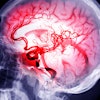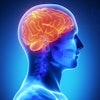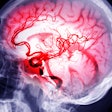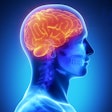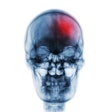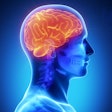Patients with periodontal disease (PD) and caries may face a higher risk of stroke and other major adverse cardiovascular events (MACEs), according to a study recently published in Neurology Open Access.
Furthermore, patients with only gum disease or with both PD and caries showed a significantly higher overall rate of ischemic stroke and major cardiovascular complications than those whose oral health was optimal, the authors wrote.
“Co-occurring PD and dental caries were independently associated with increased risk of ischemic stroke and MACEs,” wrote the authors, led by Stefanie Wood of the University of South Carolina School of Medicine Department of Neurology (Neurol Open Access, October 22, 2025, Vol. 1:4, e000036).
The study included 5,986 adult participants who completed dental assessments between 1996 and 1998, with follow-up data collected through 2019. Individuals with prior ischemic stroke, coronary heart disease, or caries without PD were excluded. Full-mouth oral exams were performed, and teeth were classified as sound, decayed, filled, missing, crowned, or containing root fragments or implants, they wrote.
PD severity was assessed using periodontal profile classes, and oral health status was categorized as good oral health, PD only, or PD with caries. Stroke and major cardiovascular events were identified through ongoing follow-up calls and hospital discharge records up to 2019.
The incidence of ischemic stroke was 4.1% in the good oral health group, 6.9% in the PD-only group, and 10% in the periodontitis plus caries group. Cumulative incidence curves showed a clear trend, with individuals having both PD and caries facing the highest risk of major cardiovascular events (p < 0.0001), they wrote.
After full adjustment, gum disease plus caries was linked to higher risks of ischemic stroke (hazard ratio [HR], 1.86; 95% confidence interval [CI], 1.32 to 2.61) and MACEs (HR, 1.36; 95% CI, 1.10 to 1.69). Elevated risks were also seen for thrombotic (HR, 2.27; 95% CI, 1.22 to 4.24) and cardioembolic strokes (HR, 2.58; 95% CI, 1.27 to 5.26). Regular dental visits were associated with significantly lower odds of PD (odds ratio [OR], 0.71; 95% CI, 0.58 to 0.86) and PD + caries (OR, 0.19; 95% CI, 0.15 to 0.25).
Nevertheless, the study had limitations. Participants tended to be younger, healthier, and more educated than those excluded, likely due to the omission of older individuals with poor health or tooth loss, the authors added.
“Integrating dental care into routine medical risk assessment and promoting preventive oral hygiene practices may offer a novel strategy to reduce vascular risk at the population level,” they concluded.

